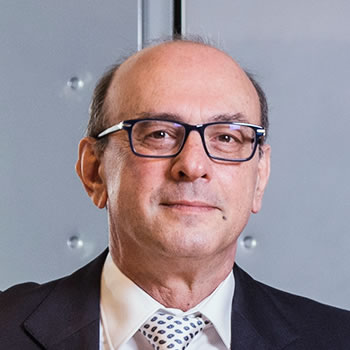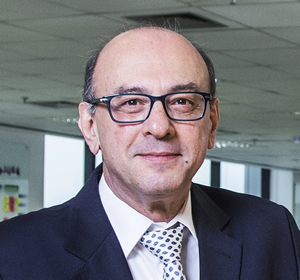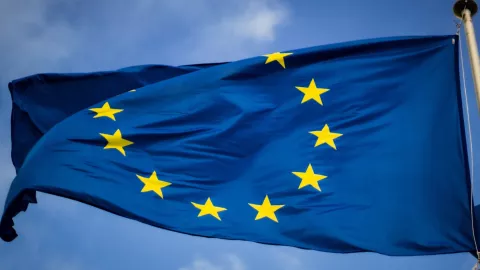How did it get here? You probably just had to turn on your phone and touch the screen. Nowadays we don't even think about it - but do you know how energy reaches you, making it possible for you to read this article?
Although it is always available when we need it, electricity travels a long distance. Did you know that the starting point can be more than 1,000 kilometers away? This is what happens, for instance, in the big city of São Paulo. Part of the energy is produced at Itaipu hydroelectric plant, on the Paraná River, between Brazil and Paraguay, and then travels a long 'road' before reaching the Brazilian metropolis. Now imagine the thousands of kilometers needed to transport energy across Brazil, which has more than 209 million inhabitants.
This is a continent-sized country, and the major production centers are located in the north and northeast of the country. The electricity generated by these plants must be transported until it reaches the distribution network. EDP Brasil saw a business opportunity here: besides the profits it generates, it is also attractive to shareholders and indispensable for the people. But one thing at a time: before we focus on transmission, we must first understand how energy flows from the production stage to final consumption.
The electricity roadtrip
If you have ever made a long journey by car, you know that everything must be properly planned from the point of departure to the point of arrival. You can always improvise along the way, of course, but in the energy roadtrip there should be no obstacles or unforeseen events.
In the past, power plants only had the capacity to serve small areas. But as private and industrial consumption increased, power plants also grew. It was therefore necessary to look for more spacious sites to build new production centers, which usually had to be built in areas rich in natural resources (namely next to rivers, so as to allow hydroelectric production) and away from consumption sites. This meant finding new ways to transport energy at high voltage, over long distances and with minimal losses, to the distribution network.
Energy transmission is the name given to the transport of energy between the production and distribution stages. Before reaching the end consumer, energy flows through substations that change its voltage.
We can thus say that the roadtrip comprises four stages:
- Production
- Transmission
- Distribution
- Consumption

Brazil is a continent-sized country and that is why transmission is as important as generation - especially because while our latest hydroelectric plants are located in the Amazon region, the major charging centers are in the southeast and south of the country. In other words, we have to transport large volumes of generated energy.
Luiz Otavio Henriques, Vice President for Generation and Transmission at EDP Brasil
A marathon spanning thousands of kilometers
Covering an area of about 8.515.767 square kilometers, Brazil is the fifth largest country in the world. That figure may seem long and unintelligible, but it amounts to approximately 1.6% of the entire surface of the planet. Impressive, isn't it?
Brazil now has a 141.388-kilometer electricity 'highway' spread across the country. The National System Operator (ONS) estimates that this 'highway' will be 185.500-kilometer-long by 2023. This is almost half the distance between the Earth and the Moon! Until it becomes necessary to transport energy from our only satellite, we must make do by land. And how does that happen?
There may be some intermediate substations after a few hundred kilometers to compensate for any possible losses and ensure energy transmission stability. “EDP Brasil also builds these controlling substations. These are intermediaries in the basic grid, and then they deliver to the distributors," says Luiz Otavio Henriques. By way of example, the Group has 500 km of transmission lines in Serra do Rastro (State of Santa Catarina); therefore there is an intermediate substation there.
This is how the transmission system works, but for a company to be able to build such a long energy 'highway', it will have to participate in a tender procedure with several competitors - this happens in auctions that are held by the Brazilian government.
Going once, going twice, sold!
Can you imagine someone talking really fast, announcing the prices of objects being auctioned, creating an entrancing rhythm that seems to take your breath away just by watching it? And in the end, they slam the wooden hammer against the table and shout, "Sold!"... Well, energy auctions in Brazil are not so hectic, but it is interesting to know how they work.
Brazil's energy transmission model is not like the Portuguese one. This European country has only one organization supervising electricity transmission - REN. In Brazil the system is organized into lots, which are then auctioned off to several companies. ANEEL (National Electric Energy Agency) holds these auctions to award energy transmission concessions to companies which will then be in charge of the entire construction project. The most competitive company - that is, the one offering the lowest construction cost - wins the lot.
There is no hammer knocking against the table, but there is something exciting about these auctions: bids are submitted in a closed envelope. If there is a difference of less than 5% in the bids of two companies, negotiations become public so that investors lower their prices even further, leading to even greater competition. Can you imagine the adrenaline running through each negotiator during these auctions?
One of the advantages of these auctions is that it allows for free market competition between established companies and new players. This has contributed to reducing government spending and executing these projects within shorter timescales.
In December 2018 EDP Brasil began operating its first transmission project, in the state of Espírito Santo, 20 months before the regulatory deadline.
"No matter how long the journey is, the most important thing is to take the first step"
The quote is from Brazilian songwriter Vinicius de Moraes, and it really hits the nail in the head. EDP Brasil has been operating in the country's generation, distribution and trading markets for more than 20 years. The last step was energy transmission, but this was a huge move. This business opportunity offers the Group and its shareholders an interesting return on investment.
In 2016 EDP Brasil went shopping and invested in the acquisition of several energy transmission lots in the states of Minas Gerais, São Paulo, Santa Catarina, Espírito Santo, Maranhão and Rio Grande do Sul, amounting to about 1,400 km of transmission grids in Brazil's electrical system.
These investments in the transmission area, which add up to R$3.5 billion (about €756 million), follow a management model - called the Project Management Body of Knowledge (PMBOK) - which had already been adopted in energy generation projects. It was this model that allowed the company to prepone the delivery of Cachoeira Caldeirão, Santo Antônio do Jari, and São Manoel hydroelectric plants by several months. But to implement these projects, we must understand the specificities of each state.
Hand in hand with communities and the environment
Because Brazil is such a diverse country, there are risks and specificities in each state that have an impact on the economy, local communities, and the environment. For EDP Brasil, the strategy is to understand local communities and try to adapt to them. We must always work with local communities, explain all work processes, and clarify any doubts that may arise.
The PMBOK model comprises a range of practices adapted to the reality of EDP and of each project - and always with the joint coordination of several departments (legal, environmental, engineering, etc.). "The secret of building lies in the model, and this particular model benefits the whole structure, the whole technique and solution. Building is easy, the difficulty lies in being able to face obstacles." According to Luiz Otavio Henriques, teamwork is the key to avoiding delays in construction deadlines.

When we look at a continent-sized country like Brazil, with huge cultural differences between cities, between states, the main problems revolve around the environment and local communities. We must understand where and how we are going to act while maintaining a very close relationship with local communities. That is the secret."
Luiz Otavio Henriques, Vice President for Generation and Transmission at EDP Brasil
Each lot has its specificities and challenges. In the state of Maranhão, for instance, communities face greater financial difficulties. EDP Brasil's investment of R$182 million in a project spanning over 200 kilometers in Maranhão has created 1,100 direct jobs during the construction stage.
In the state of Santa Catarina the challenge is more environmental. When a transmission line is built in this state, hundreds of kilometers go through the mountains. Luiz Henriques exemplifies this with the case of Serra do Rastro. This mountain range is a natural barrier that makes it impossible to reach Santa Catarina, and it is one of the few places where it snows in Brazil. In order to install transmission line towers, EDP has to use helicopters - an innovative method for this kind of work within the Group.
Nothing can go wrong when building these long energy 'highways', and one must always find a way to mitigate environmental impacts. That is why EDP Brasil invests in an inclusive cooperation model and wants to continue investing in this formula.
Paths parallel to the energy 'highway'
After a journey of many kilometers, EDP Brasil knows there is still a long way to go.
Until 2022 EDP Brasil will invest R$3,5 billion (approximately €730 million) in the transmission segment for the construction of 1,400 kilometers of lines and six substations in the states of Santa Catarina, Rio Grande do Sul, São Paulo, Minas Gerais, and Maranhão. According to EDP Brasil President Miguel Setas, the company is focusing on smaller lots that attract fewer competitors, as there is 'aggressive' competition in the Brazilian market and the company does not want to embark on projects with little profitability.
With its eyes on the road ahead and adopting a safe driving attitude, EDP Brasil has also created the first Smart Electric Grids laboratory in Latin America. This space conducts several studies in the Smart Grids and Power Supply Quality area. The objective is to bring Brazil's electrical system closer to what is considered to be the future of energy distribution around the world. This is an ambitious journey, but the attractions are marked on the energy sector map.

